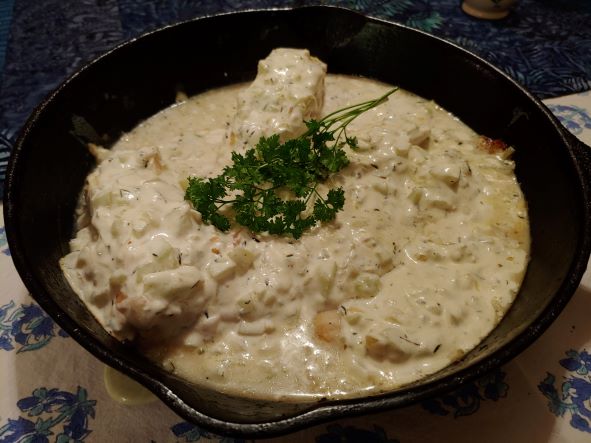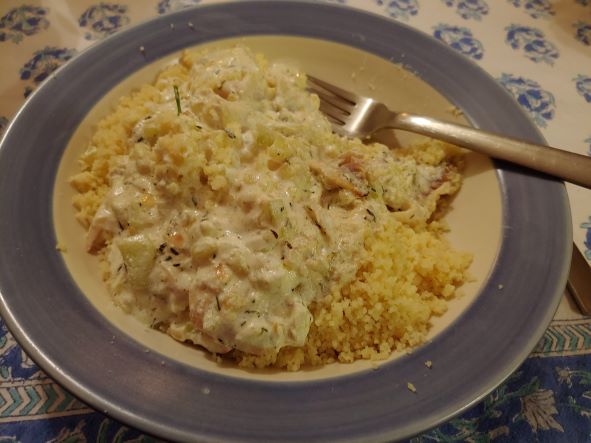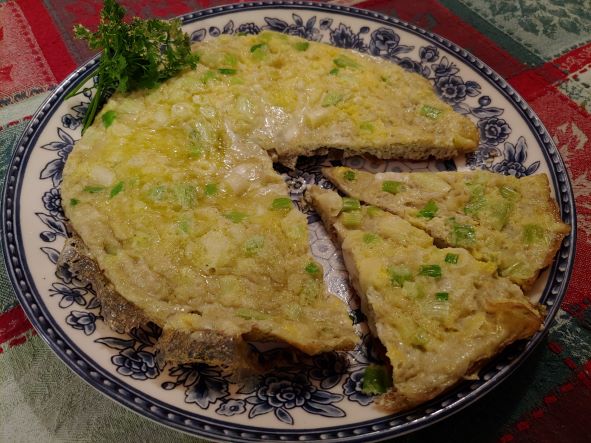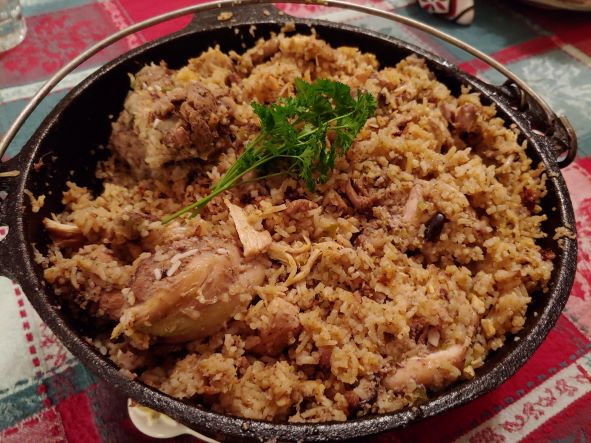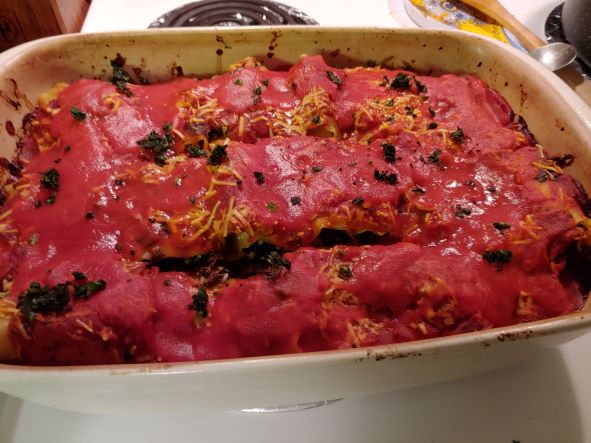This is a dish that was provided by some Greek-American friends. What fascinates is that it combines fruit with lamb and rice. In this case, green grapes. I’ve noticed also that, in Middle Eastern cuisine, they sometimes add fruit to the entrée; and it brings a whole new dimension to a dish.
With a good Greek red wine, like an Agiorgitiko, Mavrodaphne, or Moschomavro, it makes for a fine meal. Besides Greek reds, you can utilize a good Cabernet Sauvignon, Zinfandel or Bordeaux. This is a recipe that will please even your most jaded friends.
LAMB SHANKS WITH RICE AND GREEN GRAPES
(Arni Me Rizi Ke Stafeli)
Ingredients:
3 tablespoons olive oil
4 lamb shanks
½ cup chopped onion
2 cloves garlic, peeled and finely mince
3 cups chicken broth
½ teaspoon salt
¼ teaspoon dried oregano
1 bay leaf
3 tablespoons butter
1 cup long grain rice
2 cups green seedless grapes
Instructions:
- Preheat oven to 375 degrees F.
- Rinse lamb shanks under cold running water and pat dry with paper towels.
- Heat olive oil in a heavy skillet or fry pan and brown the lamb shanks. Place them in a large pot or Dutch oven..
- In the same skillet as before, brown the onion and garlic. Add to the lamb shanks. Pour the chicken broth into the pot or Dutch oven, and add salt, oregano and bay leaf. Bring the broth to a boil, cover, lower heat to a simmer, and cook for 45 minutes or until the meat is fork-tender. Pour off the liquid and keep the lamb warm.
- Melt 1 tablespoon butter in a 1½ to 2-quart saucepan and brown the rice lightly over medium-high heat. Add 2½ cups of lamb broth. Cover tightly. Reduce heat to a simmer and cook about 30 minutes or until all of the liquid is absorbed.
- Meanwhile, melt the remaining 2 tablespoons of butter in a heavy skillet. Just before serving, cook the grapes in the butter over medium-high heat until bright green. Arrange the rice in a large serving dish, top with the lamb shanks, spoon the grapes and butter over the lamb, and serve.
Yield: 4 servings.


